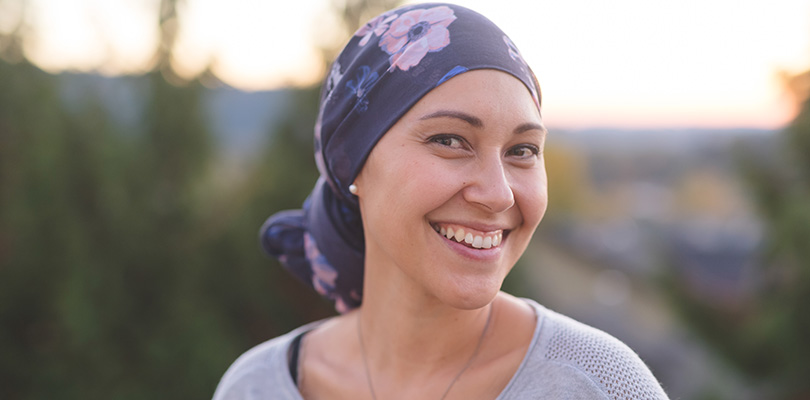Photo Credit: Wavebreakmedia / iStockPhoto.com
Yoga for Cancer
Cancer treatment can be just as draining as the cancer symptoms themselves, and after a while your life, vitality, and personality will definitely suffer. The good news is that yoga can help with the discomforts that cancer causes, and with the extreme fatigue and weakness that treatment can bring.
The versatility of yoga also earns it a top spot among exercises. After all, when you live with cancer, you rarely feel ambitious and energized, which makes it very difficult to stick to a workout schedule that involves sustained exertion. Luckily, there are plenty of ways to adjust, alter, and augment your yoga practice to suit your mood and ability.
It’s easier to begin (and maintain) a new workout routine when you focus on the benefits, and when it comes to yoga for cancer, the list of benefits is long. Learn what you could be gaining from a daily practice, and how to get started safely and comfortably.
How Yoga Can Help Your Physical Symptoms
Yoga can’t cure cancer, but it can make it much easier to live with. Studies show that yoga postures and breathing techniques can alleviate certain cancer symptoms (especially fatigue and anxiety), and help you get in deeper touch with your physical sensations – and your control over them. Simply put, yoga just makes you feel good.
More physical comfort means a better quality of life, and to that end, yoga helps by:
Detoxifying Tissues
Both cancer and cancer treatment cause toxins to build up in your tissues, leading to a good deal of general discomfort, and possibly further health complications. While there’s really no way to avoid that toxin accumulation, there are ways to get rid of it, and that’s where yoga really shines.
Postures like spinal twists (and other poses that involve abdominal compression) stimulate blood flow and encourage your lymphatic system to carry impurities out of your tissues. In turn, you will feel more energized and at ease.
Increasing Immunity
Regular, moderate exercise has been shown to boost the immune system, which makes it particularly important when cancer treatment like chemotherapy has knocked down your body’s natural defenses. On the other hand, too much exertion too often could have the opposite effect.
Since yoga can be tailored to any specific range of motion or energy level, it’s one of the safest activities to stimulate the immune system. Instead of competing with other people or yourself, use your yoga practice to monitor and gently awaken your body, respecting your limits as they change from day to day.
Energizing Muscles and Organs
Deep, even breathing (pranayama) is a crucial aspect in most yoga practices, and though it’s meant to focus your attention and calm your body, it also helps you to take in more oxygen with each breath. As you move your muscles through the postures while you continue to breathe in this fashion, you effectively stimulate your circulation: more oxygen will move through your bloodstream and feed your cells.
Reaping the Emotional Rewards of Yoga
There are as many psychological benefits to yoga as physical benefits, and in fact, these could have even more positive impact on your daily life and resolve.
Cancer remission means that you are completely cancer-free or partially cancer-free, but cancer may return at a later date.
Decrease Stress, Improve Your Life
Stress can literally weaken your defenses against illness and disease. Allowing your stress to soar for a long period of time will throw your hormones out of balance, increase your physical pain, and interrupt the restorative sleep your body needs to fight off disease and infection.
The special breathing techniques in yoga have been shown to activate a “relaxation response” by helping the respiratory system regulate the nerves involved in stress cycles. Eventually, you can retrain your nervous system to overcome the grief and fear that comes with stress, leaving you in a much better state of mind during and after your yoga practice.
Strengthen Your Outlook and Increase Your Confidence
Cancer is scary, there’s no denying that. However, letting the fear rule your life is a big step in the wrong direction. It’s important to learn how to cultivate a positive, proactive outlook to keep your mood high, and your focus on getting better.
Exercise produces endorphins, hormones that directly and immediately improve your mood. Even a relatively mellow yoga practice encourages your body to release endorphins, as well as specific neurotransmitters that regulate the nervous system and emotions. The result is more balanced demeanor, and the pleasant realization that you have an innate ability to adjust your perspective.
Learn Acceptance
When you practice yoga, you tend to focus on your body — but in a good way. Cancer makes you lament your body’s limitations, but yoga helps you to focus on what’s right with your body, rather than what’s wrong with it.
Many people find that a yoga practice is a lesson in acceptance. It gives you the space and time to become aware of what your body can do, but also learn to accept everything about your state of health, and honor that complete package. Acceptance can be incredibly liberating, and will leave you with a deep sense of calm.
Tailoring a Yoga Routine to Your Abilities
Yoga truly appeals to every sort of person, because there’s a little bit of every type of exercise. There are energizing poses for fatigue, relaxation poses for nausea, strengthening poses to prevent muscles from weakening, and range of motion poses to help you regain flexibility and movement after surgery.
Working with an instructor who has experience leading cancer patients through a yoga practice, you’ll be able to craft the perfect routine for you.
Whichever yoga class you choose, there are a few points to keep in mind when it comes to exertion. First, if you have any back or joint issues, be sure to discuss them with your teacher for the class begins — you will likely need to alter some postures in order to avoid injury. In general, you should focus on:
- Careful breathing. An even, or circular breath will bring you into a state of relaxation and stimulate your nervous system. Typically, you will move between postures on the inhale or exhale, which focuses your attention and keeps your body moving in harmony.
- Gentle bends. Forward bends and back bends can be very rejuvenating, but good form is vital. Bending too far is a recipe for injury, and it will force your body out of alignment. Sustaining the pose is the important part, no matter how deep you can take your pose.
- Stay in the moment. Learning to be in a state of awareness without judgment or reflection can take some time and practice, but it’s the best way to reap the rewards of yoga. A wandering mind can add stress and distraction, which works against you. Try not to compare one day to another – appreciate each and every yoga workout for what it gives you.
Although doing some poses in your living room on a daily basis can bring results, you’ll see greater benefits if you can attend a class for cancer patients and survivors.
For one, insightful guidance can make all the difference when it comes to form and focus: the soothing voice and gentle hands of a trained yoga instructor will help you pace yourself and stay in the right pose. Plus, the interaction and support of your fellow yoga classmates can be just as therapeutic as the yoga itself, so take advantage of the social element.







